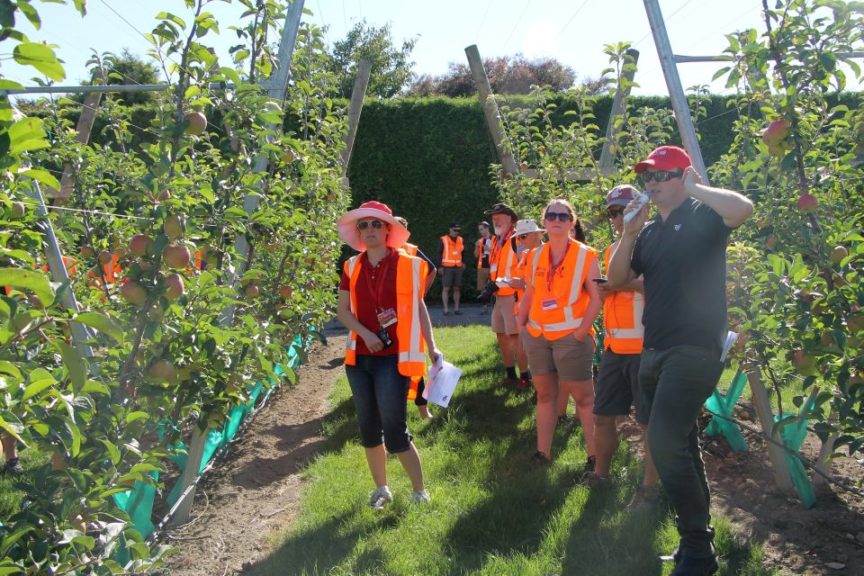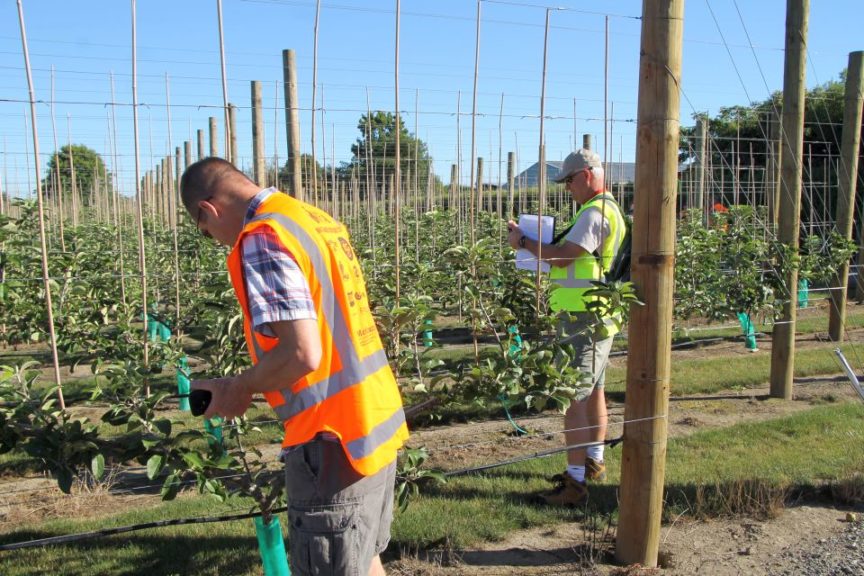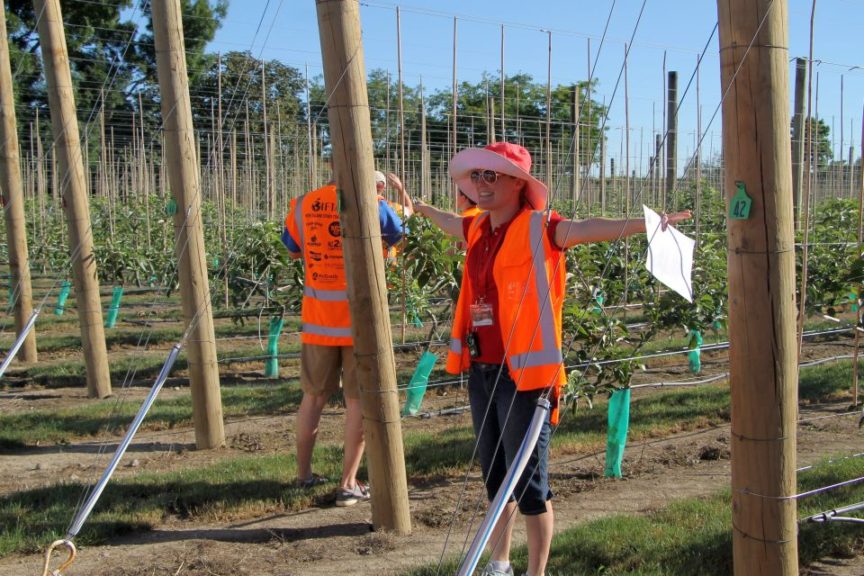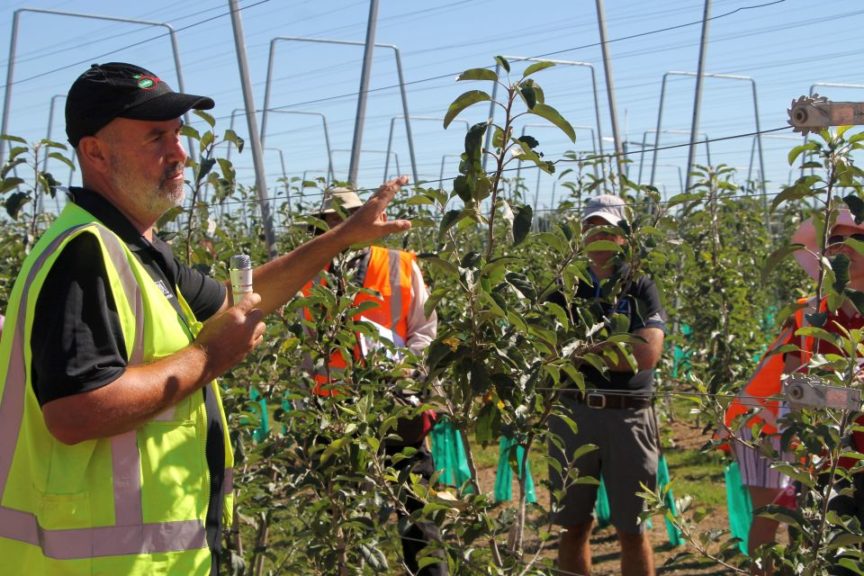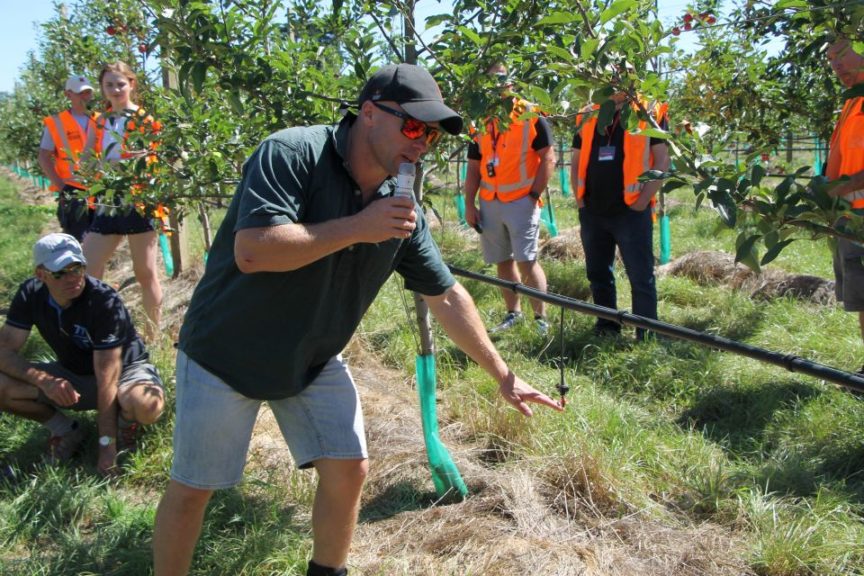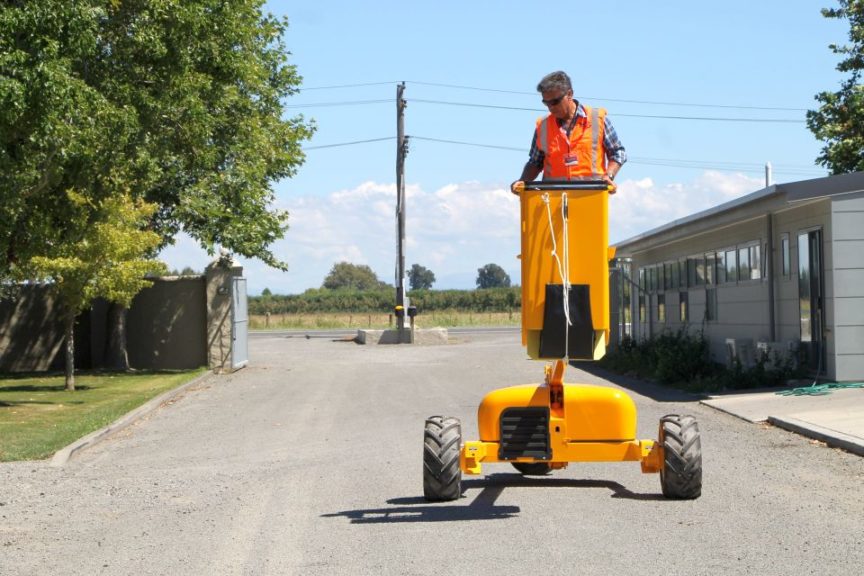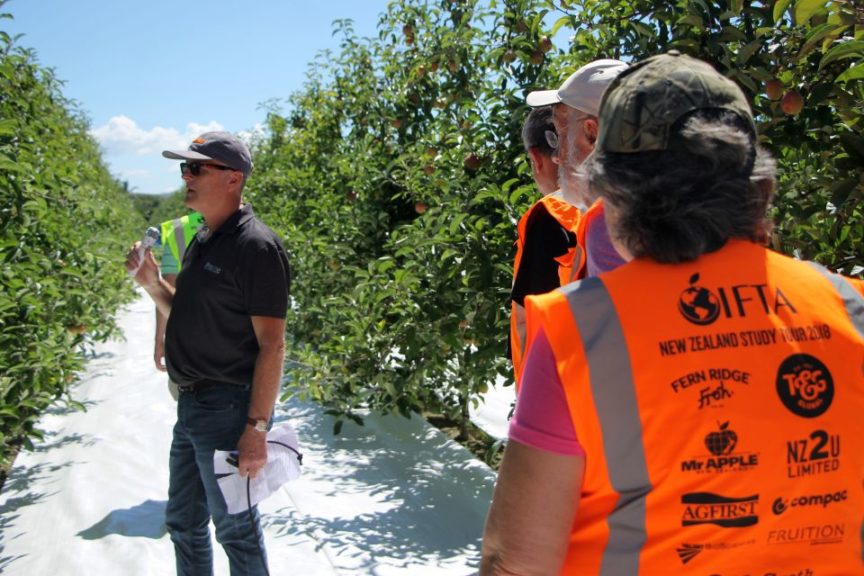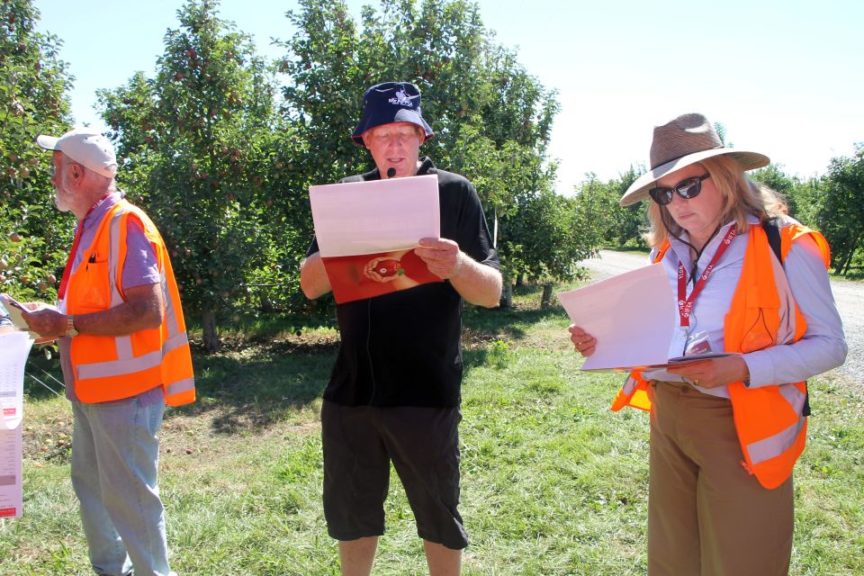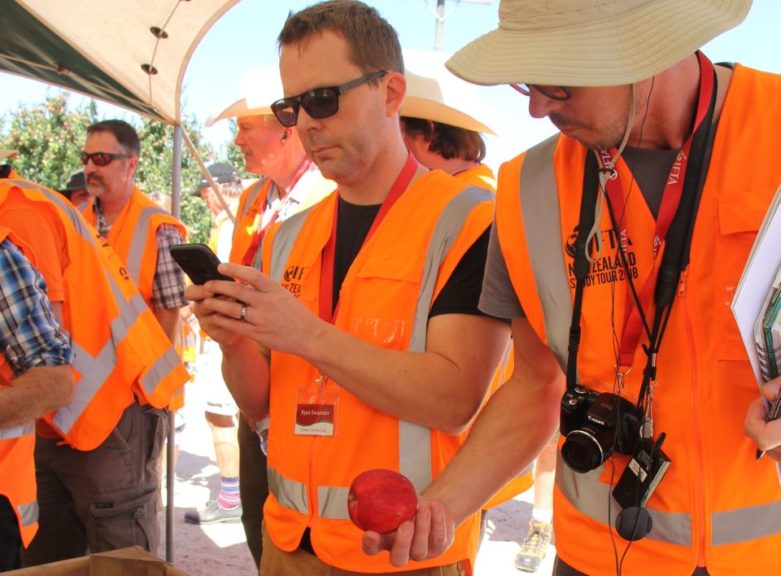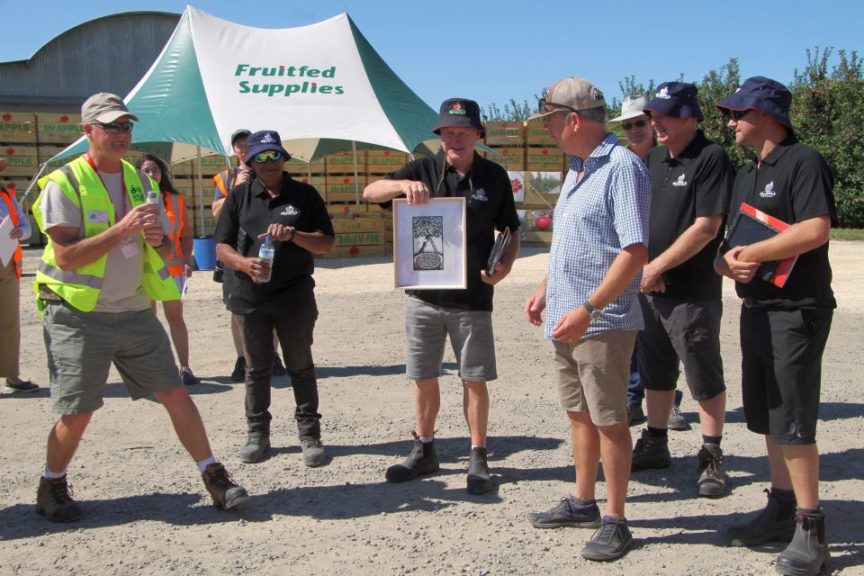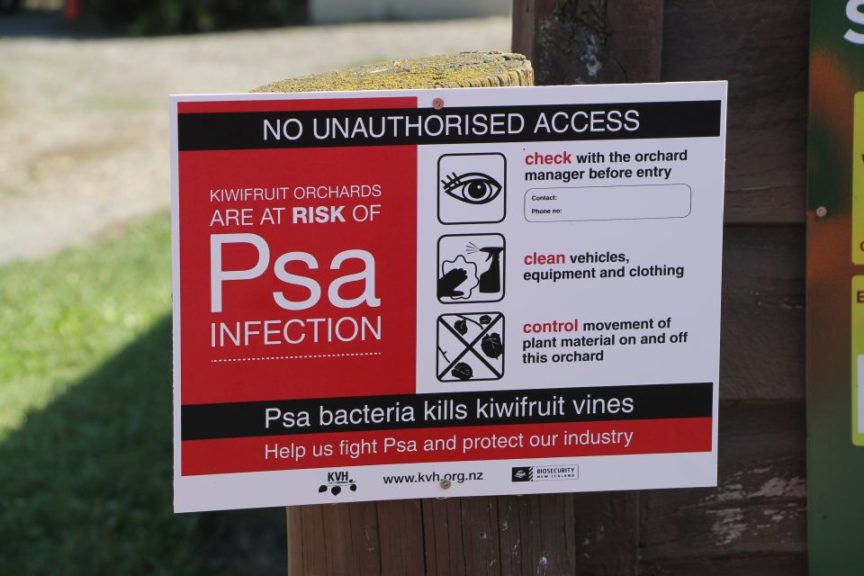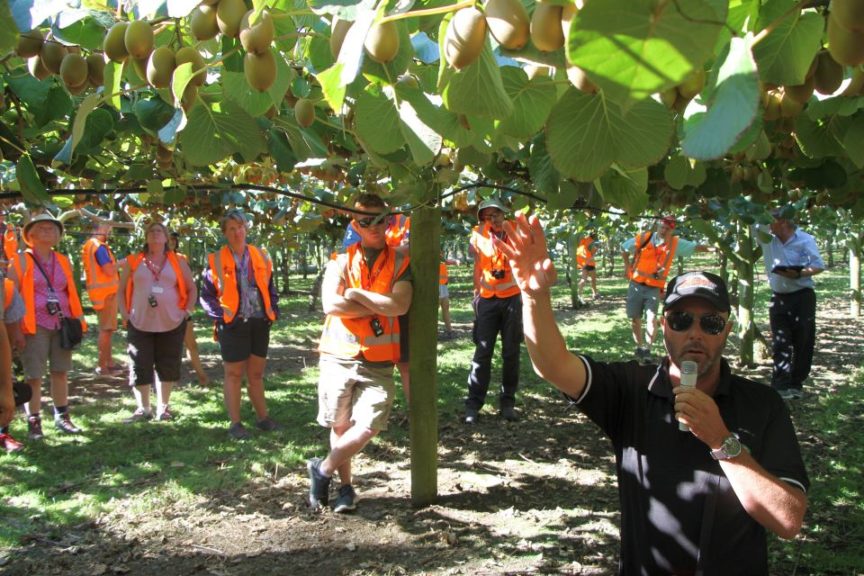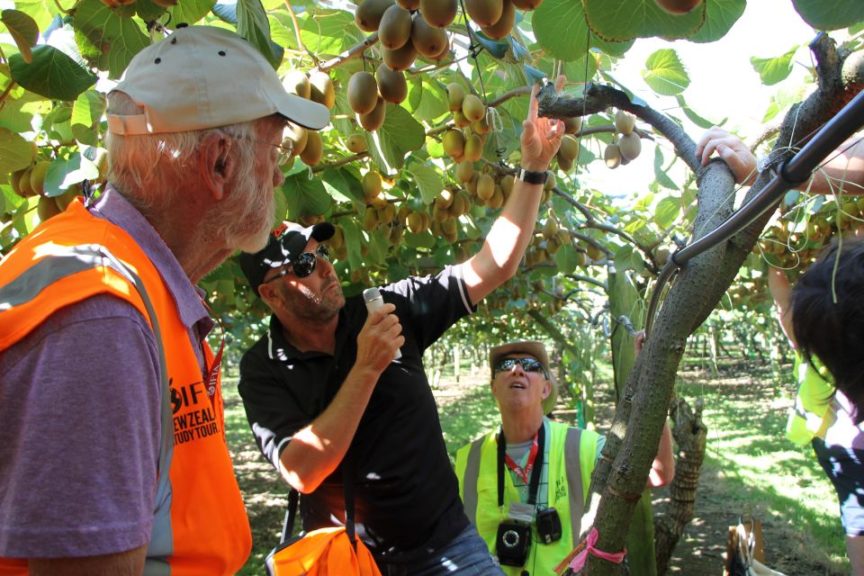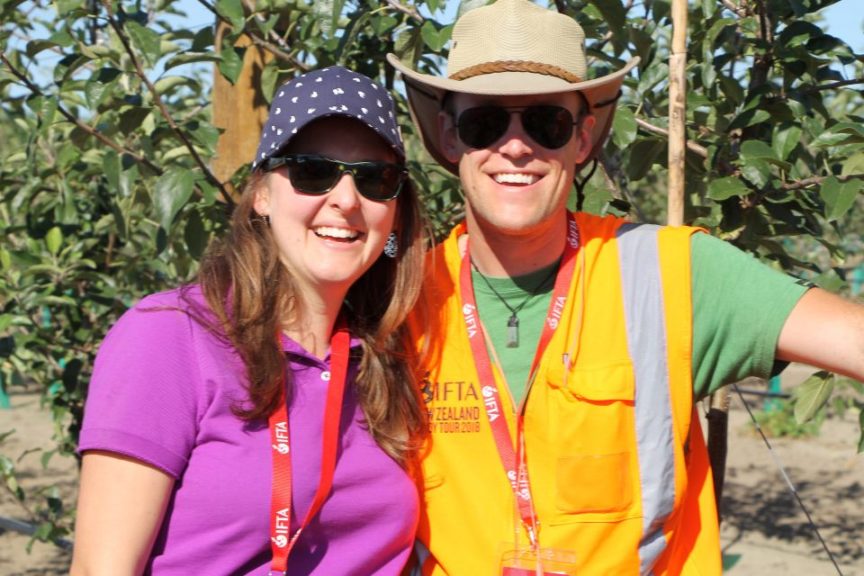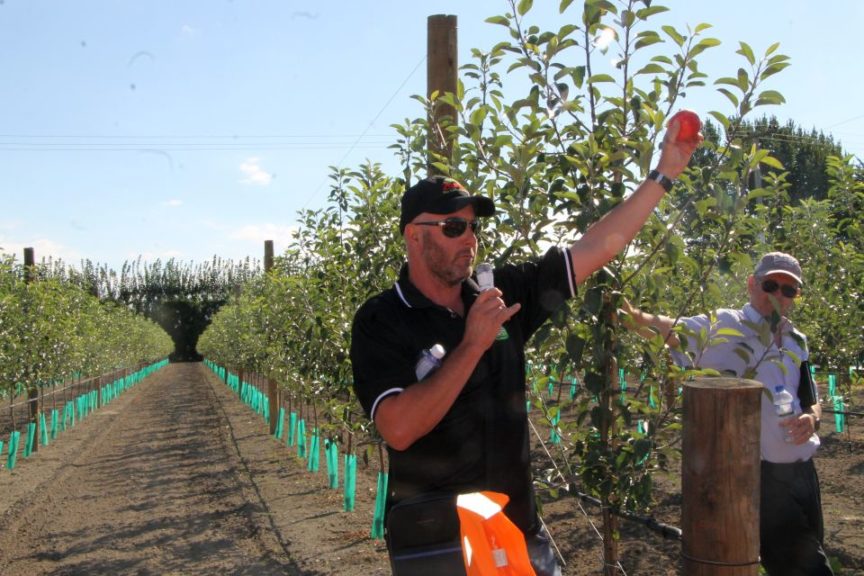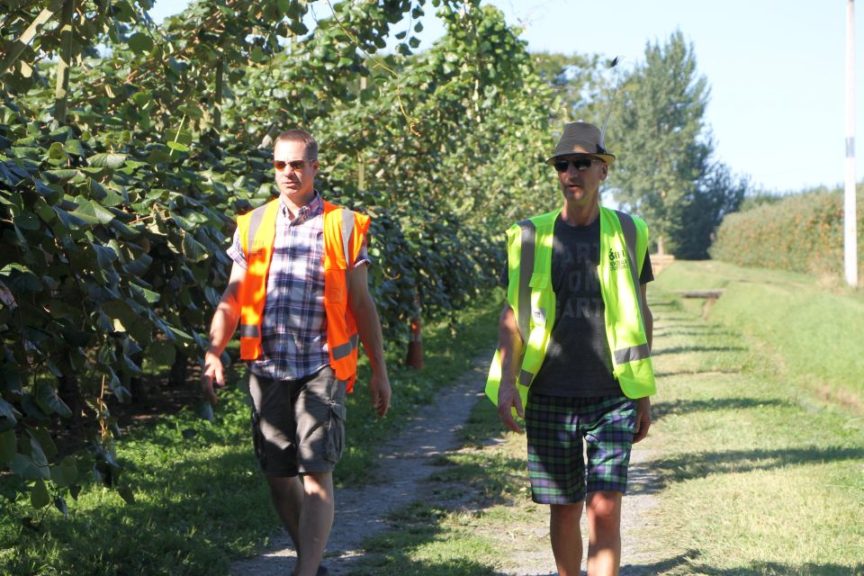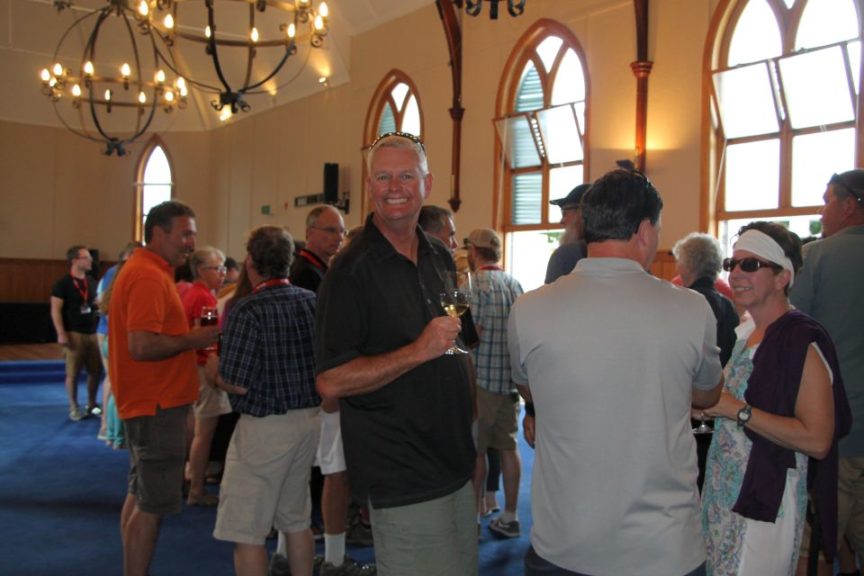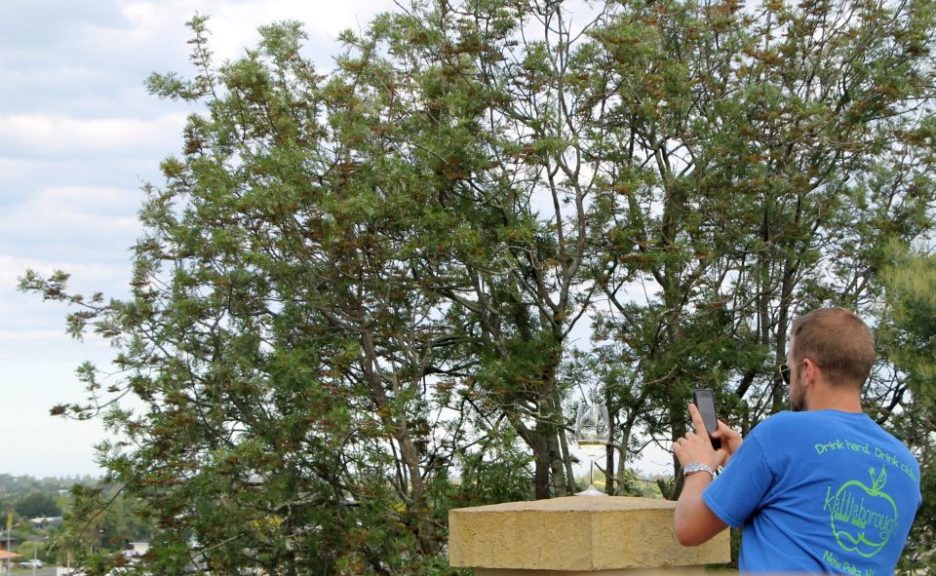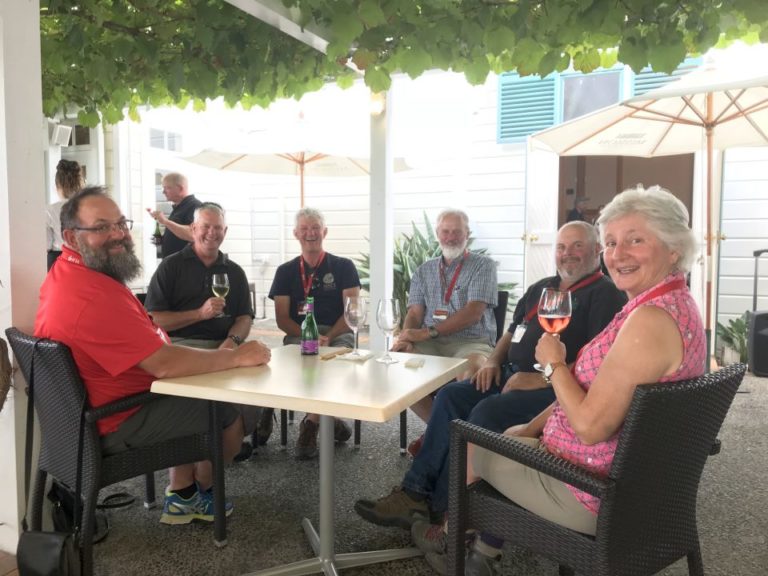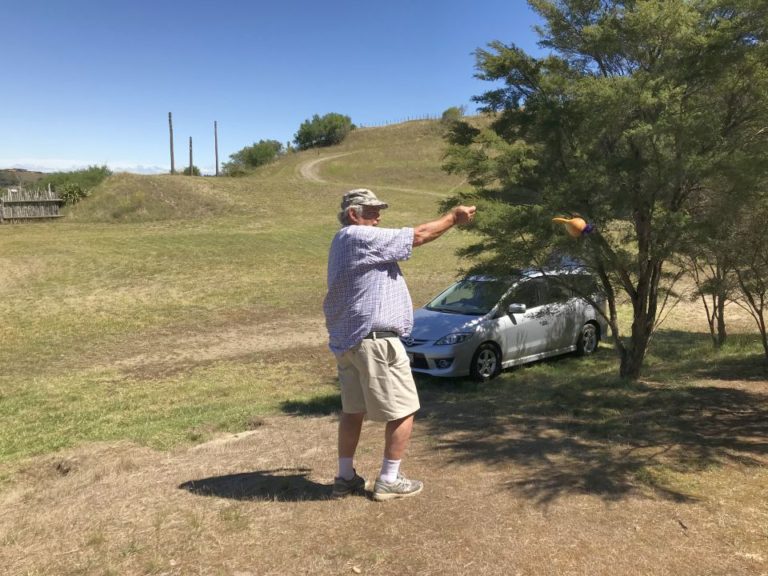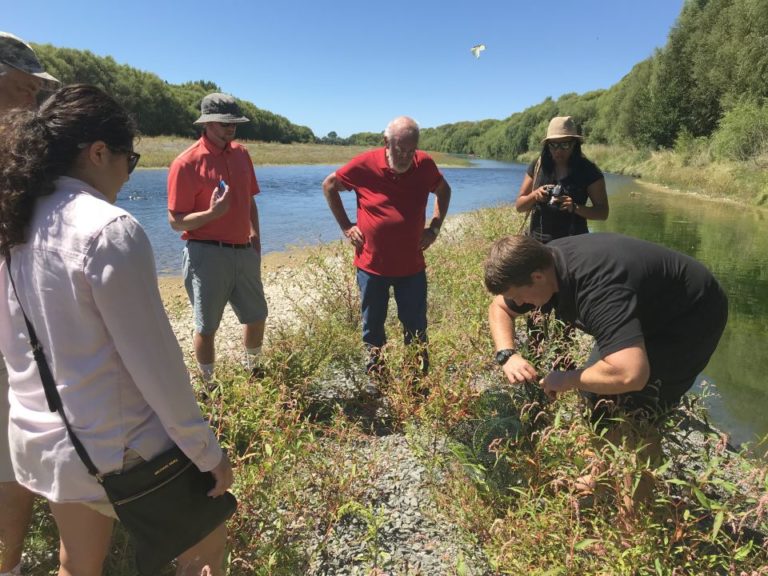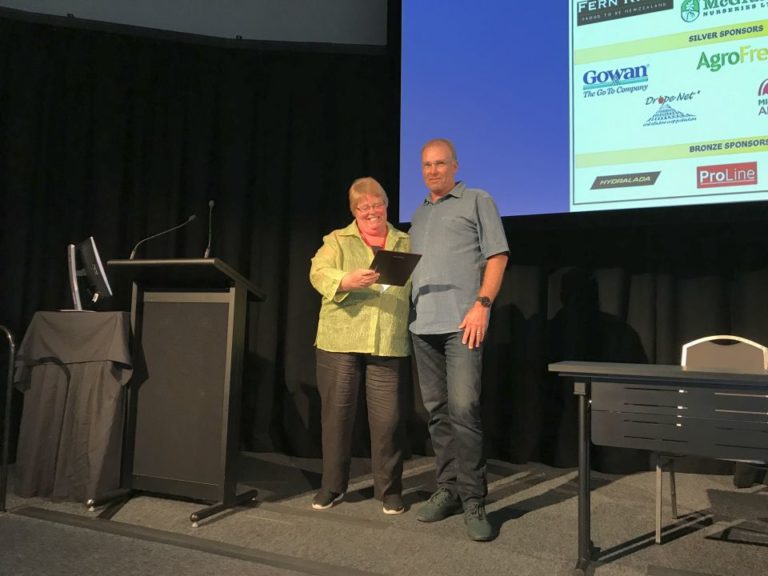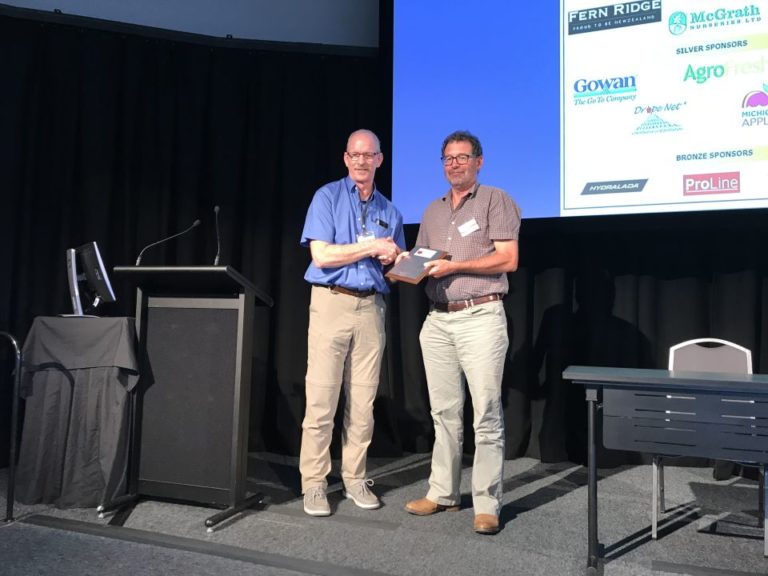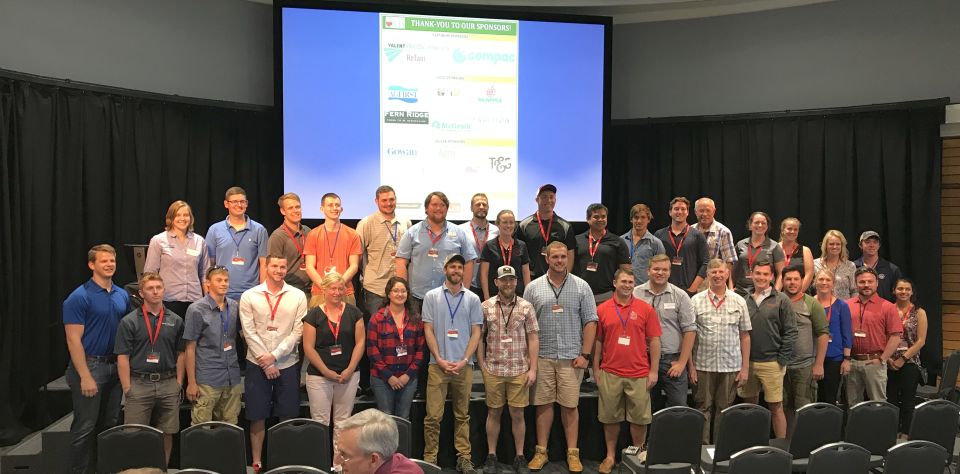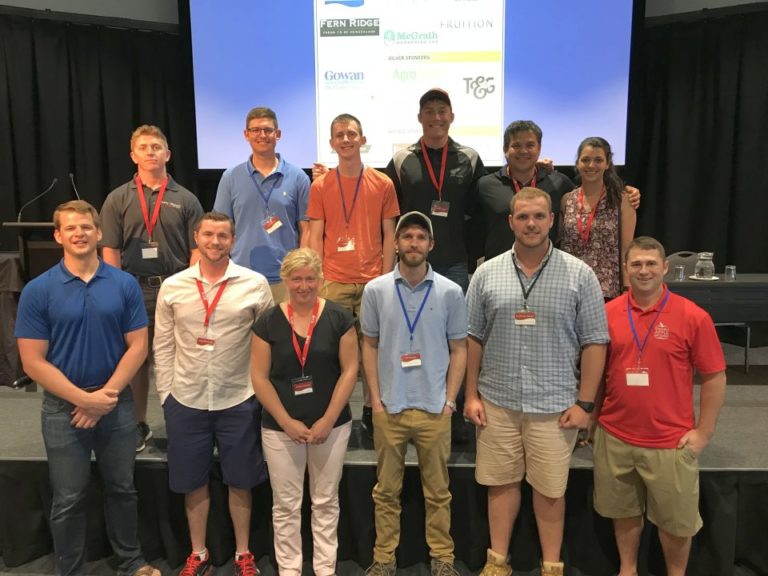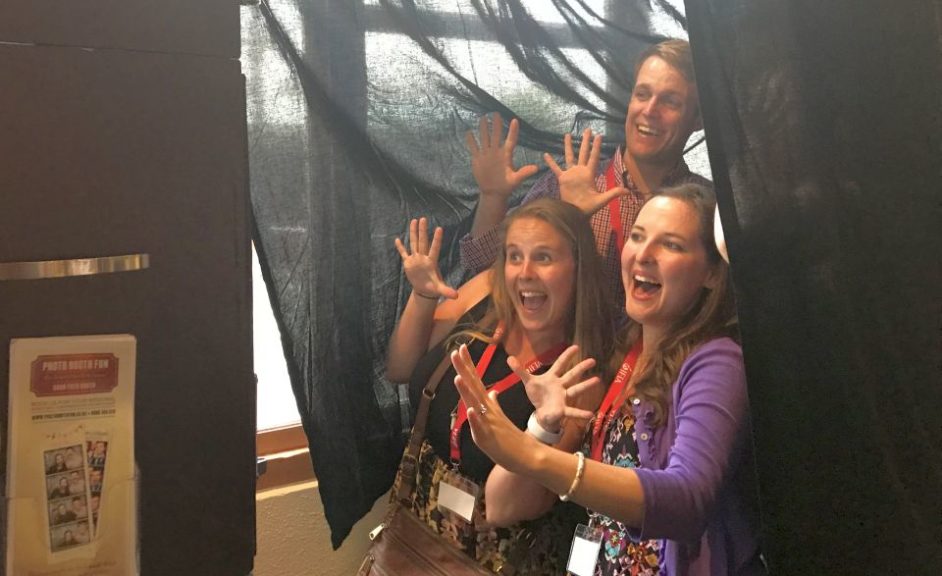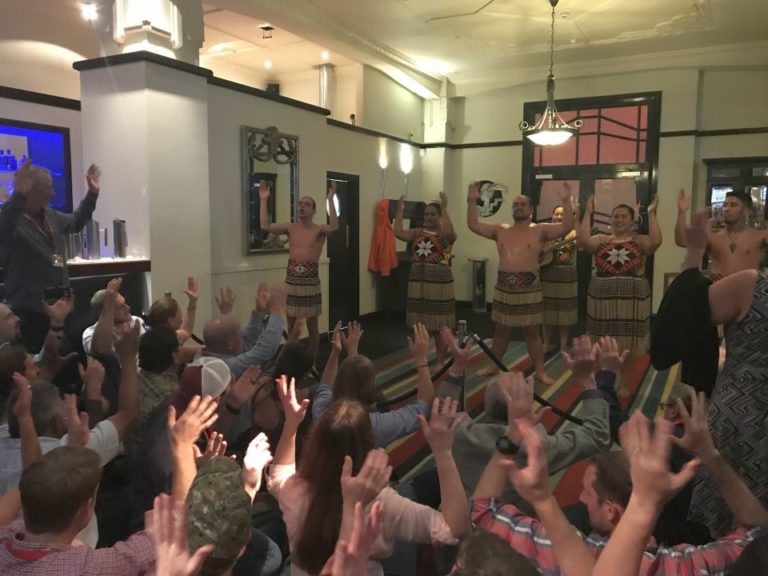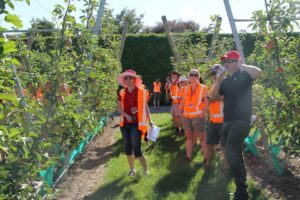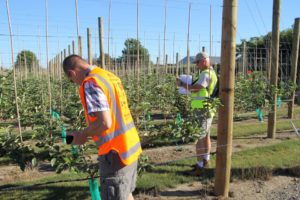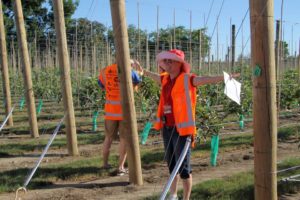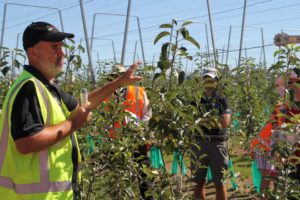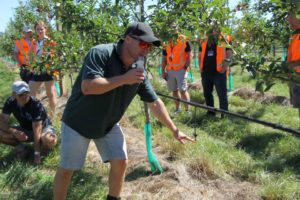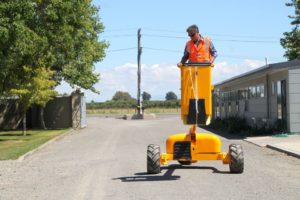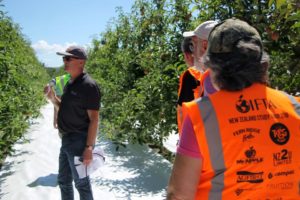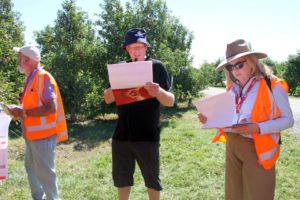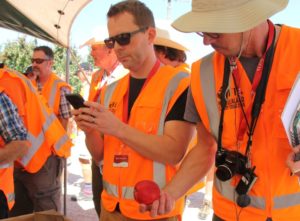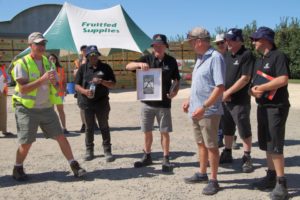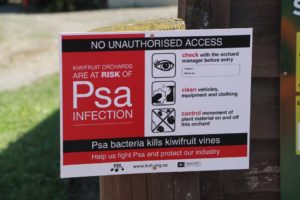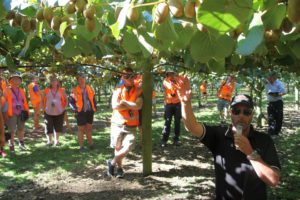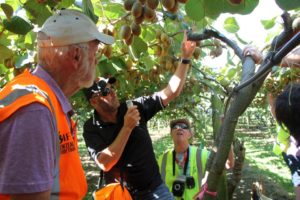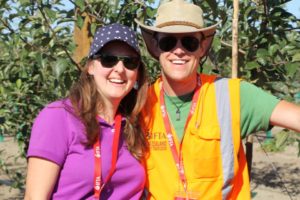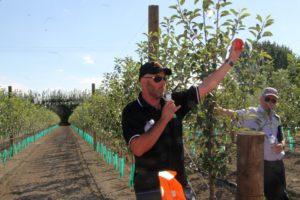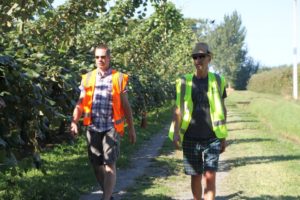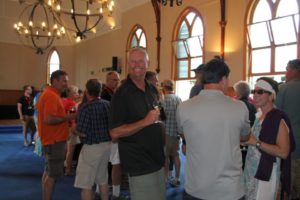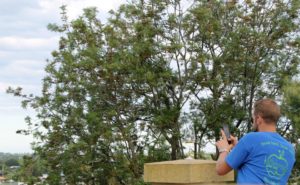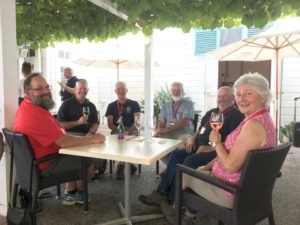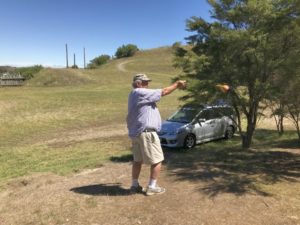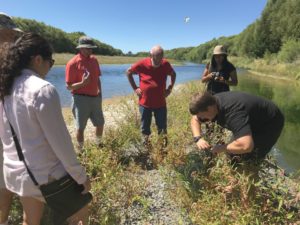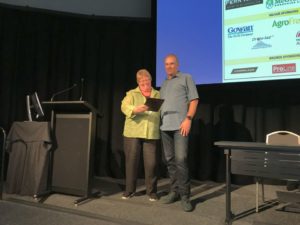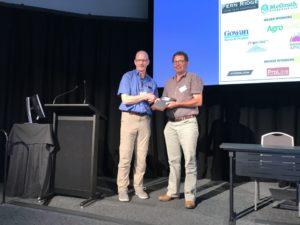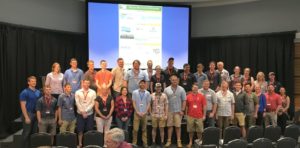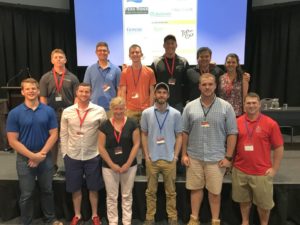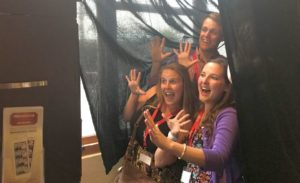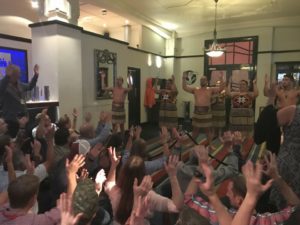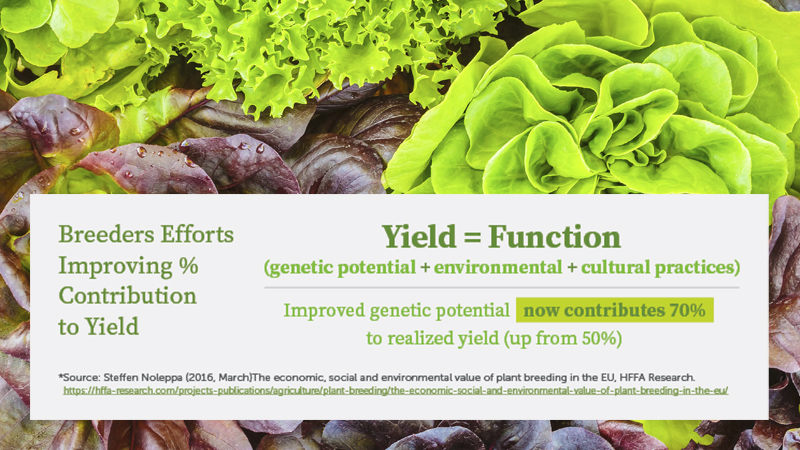Innovation Part of New Zealand Apple Growers’ DNA
Innovation is a part of Kiwi lifestyle. In fact, as the International Fruit Tree Association’s (IFTA) New Zealand study tour kicked off, we were told New Zealand’s connection to the No. 8 wire. This “No. 8 wire mentality” has become synonymous with Kiwi innovation. No. 8 was the British Standard wire used for sheep fencing, but was often used to fix structural or mechanical issues. It has become a greater symbol for New Zealanders’ resourcefulness in problem-solving.
While many stops along the two-week tour highlighted innovation, seeing the Future Orchard Production System (FOPS) in one of T&G Global’s commercial orchards was quite a sight to see. EnzaFruit Products Inc. is the U.S. Subsidiary for T&G Global.
T&G Global is looking at the next step in maximizing production, with an eye to automation. Most New Zealand growers struggle with maintaining vigor, thanks to ample sunlight and abundant rain. T&G Global is looking at a FOPS system and also a V-trellis to provide a way to divert the vigor into fruit production while also boosting per-acre production.
“We need to get higher efficiencies of land,” says Morgan Rogers, Head of Quality & Innovation and ROW Manager for T&G Global. “We’ve got to put fruit on trees to help manage vigor.”
Rogers says the 4.3 acre-planting, which varies from a FOPS 7-foot-by-10-foot planting in 2016 or a V trellis 11.5-foot-by-2-foot in 2016 of ‘Jazz,’ ‘Envy,’ and ‘Gala Galaxy’ on standard M.9 will hopefully last more than 25 years.
Rogers says he prefers the FOPS system in a 7.5-foot tree spacing to get “just a bit more shoulder room.” These systems are better-suited for mechanical harvest, given more vertical wood. A more systematic approach to production systems also are a benefit to labor, too, Rogers says.
“We have to systemize, take out variability, and be ready to automize,” he says. “We want to dial in a [tree] profile and mitigate any variability. If we can take out the [variation in] different tasks, we can hopefully attract more labor.”
High-Tech Benchmarking
While at a stop at Mr. Apple in Managateretere, we got a chance to check out a 34-year-old block of ‘Royal Gala’ on M.793 rootstock. Some growers may wonder why a 34-year-old, semi-dwarf block would still be in production. But after a running through an innovative software platform they’ve nicknamed “Billy” accessed via iPad, which tracks production and all sorts of points of data including thinning, thinking costs, packout, Brix, firmness, starch, strength, and more, it’s easy to see why.
Mark Anderson, Technical Manager for Mr. Apple says the block is expected to have four picks with yields around 99 bins to the acre, with an average packout of around 80%. Anderson says that pendulous branches seem to generate enough energy to produce large fruit. And with the assistance of reflective material, color is easily achieved in the inside of the dense canopy.
Kiwi Time
This study was truly an apple-centric study tour. But, we did get a chance to stop in one kiwi orchard, and only one. This is because our stop at Waima Fruit Company in Hawke’s Bay would be our last orchard stop in New Zealand. This orchard has not only apples but also other tropical fruit, including kiwi.
Most apple growers on the study tour, aside possibly the contingency from California, were unfamiliar with how unusually kiwis are grown. Faces were plastered to the sides of buses, as we’d pass by a kiwi orchard. The best way I can describe it is … it looks like a cross between hops, a vineyard, and a maypole.
Waima Fruit Company suffered some loses thanks to the 2010 outbreak of pseudomonas syringae pv. actinidiae (Psa), which is spread by wind and rain as well as by footwear and orchard tools and vehicles.Because of this, Waima practices meticulous sanitation.
“We treat our orchards like a hospital,” Mark Erickson, Co-owner of Waima Fruit Company, says.
The bacteria was first discovered in New Zealand in 2010 and hit golden kiwis very hard. It is estimated the industry lost more than $800 million, and the exact source of the outbreak is still unclear, although a group of growers took the Ministry for Primary Industries to court over the alleged importation of Chinese kiwi pollen and plant material.
While there are no PSa-resistant varieties, ‘Gold3’ seems to be more tolerant to PSa. Waima’s major focus is increasing dry matter into the kiwis, which helps boost grower returns. Erickson says harvest generally occurs when the weather is less conducive to fungal disorders, which helps boost packouts. Returns are higher the longer fruit is able to last in storage.
“It’s all about dollars and cents and risk and return,” Erickson says.
IFTA Honors Its Members
Generally, during the IFTA annual conference, awards are presented during a banquet one night. Given the span of this study tour and the number of people flying in and out, the awards were presented during the annual conference in Napier, with the number of tourgoers doubling – thanks to the arrival of week 2.
Plant Food & Research was presented the IFTA Industry Service award, which Richard Volz accepted on behalf of the research stations and numerous researchers.
“The team isn’t just the breeding team, the team is about new genomic technology,” Volz says. “It’s a real big team effort.”
Craig Hornblow of AgFirst Consultants NZ Ltd. was honored with the IFTA Extension Award. Hornblow was a part of the planning committee for the New Zealand study tour group, and as IFTA Board Member Karen Lewis says, “he’s internationally sought after and nationally known and respected.”
Hornblow says, “Talk to people, get into the paddock and learn from them. We are a reflection of the relationships we have chosen. Choose good relationships and nurture them, foster them.”
The Outstanding Grower was presented during the second week of study tours, while at a dinner in Napier. Richard Hoddy of Valima Orchards was recognized for his and his family’s innovation.
Field Notes, Vol. 6
DEMO TIME — While at lunch, growers had a chance to see equipment demos from Hydralada and Proline Products and hear about varieties from Fern Ridge Fresh, McGrath Nurseries, and Fruition. It’s no secret the equipment demos were popular, as most growers will flock to farm equipment. An amusing part of the Hydralada demo was when Sam DiMaria of Bella Rosa Orchards hopped on a lifting platform and took it for a spin.
NORTH ISLAND ART DECO – It’s not hard to miss the Art Deco architecture that permeates Napier’s stores and hotels. How Napier became the epicenter of that period of architectural design is because Napier was the epicenter of something larger— an earthquake believed to be 7.8 in magnitude leveled the Hawke’s Bay area on Feb. 3, 1931. Subsequent fires that erupted were impossible to control. When the city was rebuilt, most buildings were in the Art Deco style.
DON’T FORGET THE SUNSCREEN— Given New Zealand’s location in the Southern Hemisphere and its “close” proximity to Antarctica (close is a relative term, but we’re a lot closer to Antarctica in New Zealand than in the states), we’re that much closer to the ozone hole that forms over the South Pole.
It may seem like something your mother might tell you just so you take sun protection somewhat seriously, but there is actually a hole in the ozone layer. Which means wide-brimmed hats and sunscreen are a must on orchard tours. After-sun care also is important, because no matter how many times you apply, you can still get fried.
I can personally attest to sporting some nasty sunburns in a lovely shade of red in what I like to call “atomic lobster.” This is, of course, after applying 50 SPF multiple times throughout the day. If you forget, or don’t do a fantastic job covering every inch of exposed skin, you’ll know where you missed and you will pay for it.
A GAME CHANGER FOR THINNING — Metamitron, sold as Meteor by Grochem in New Zealand has been getting rave reviews on orchards stops.
“It’s a game changer for thinning,” says Craig Hornblow of AgFirst Consultants NZ Ltd.
Metamitron shuts off photosynthesis for 10 days and when applied to fruitlets it will reduce fruit set. Growers say it’s dose-dependent.
“Since metamitron, it’s changed the way we’ve been able to thin ‘Smitten,’” says grower Tristram Hoddy.
But for those growers in the states, don’t get your hopes up too much. According to Phil Schwallier of Michigan State University Extension, it is an herbicide in sugar beets and does not have a label in the U.S. for use in pome fruits.





